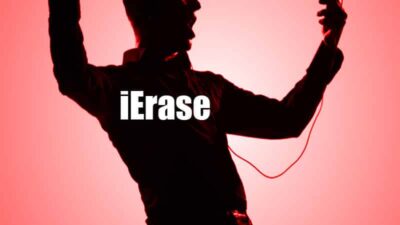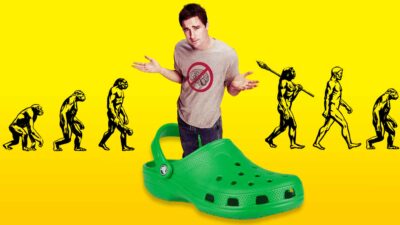Mastercard is betting that sound will be the key differentiator to make its brand stand out with consumers. The financial services company recently unveiled a new audio signature, called a “sonic brand”, after an extensive two-year developmental process.
In case you missed it, the new peppy six-note Mastercard jingle debuted in a commercial during the Grammy Awards last night (Sunday, Feb. 9, 2019).
“Sound adds a powerful new dimension to our brand identity,” stated Raja Rajamannar, Mastercard’s chief marketing officer, in a press release. “It is a critical component to how people recognize Mastercard today and in the future.”
But with an undisclosed price tag speculated to be close to $15 million dollars and no concrete metrics of success outlined, marketing experts question if Mastercard’s sonic rebrand will genuinely resonate with consumers or simply fade into the background like so much sensory wallpaper.
The Origin Story Behind Mastercard’s Sonic Logo
Mastercard collaborated with “musicians, artists and agencies from across the globe” to compose a 90-second anthem. This melody serves as the core of its new audio identity, with the catchy six-note jingle excerpted from the longer piece.
That distinct tune – which musically spells out “M-A-S-T-E-R-C-A-R-D” – plays after every card or mobile payment transaction. It’s Mastercard’s audio equivalent of its iconic red and yellow visual logo, primed to mentally associate the brand with financial transactions.
Mastercard’s chief marketing officer Rajamannar stated that sound marks are particularly useful in today’s retail environment where the nostalgic cha-ching of cash registers has been silenced. The pleasant tone aimed to give customers auditory confirmation and reassurance after each cashless purchase.
“The science is clear; jingles do work,” affirmed Dexter Garcia, chief strategy officer at Audio UX. “Studies show 60% of people recall tunes from commercials better than visuals.”
Brands like Coca-Cola and Intel have already proven the power of sticky sonic identities to root themselves in pop culture and consumers’ minds.
The Strategy Behind Mastercard’s Sonic Shift
Mastercard isn’t the first payment processor to experiment with sonic branding. Last year, Visa debuted its own point-of-purchase jingle aimed to convey “speed, trust and convenience” in a split second.
But while Visa kept it simple with one simple audio tune, Mastercard got creative by adapting its core melody into multiple genres tailored for different international locations.
Here’s the full audio release from Mastercard:
“It’s quite contrarian in many ways,” remarked Rajamannar. “Music is such that you do not want rigidity in it. The whole idea of branding is to connect with consumers emotionally.”
For example, hear the Mumbai variation performed with traditional Indian instruments and Bollywood-esque vocals.
Then compare it to a lively Colombian rendition infused with fast-paced maracas and trumpets.
This contextual, ever-changing musical identity aligns with Mastercard’s broader branding strategy. Rather than impose one rigid global logo and visual identity, its logo subtly adapts in each market to feature locally relevant icons and motifs. Extending this approach into the audio realm aims to craft regionally “native” sounds that organically mesh with users’ environments.
“The sound for Tiffany’s will be very different from that of Gamestop,” elaborated Rajamannar.
So why did Mastercard invest heaping sacks of cash into sonic branding? Experts point to the explosive growth of voice-based shopping, projected to hit $40 billion globally by 2023.
“Audio is a great branding medium because it’s personal and taps into your imagination,” analyzed Matt Lieber, cofounder of podcast giant Gimlet Media. “That affinity is hard to achieve with a visual box on a screen.”
As companies increasingly compete for share of voice, an audio calling card will be critical in the voice-first landscape of the future. Mastercard’s sonic logo aims to cement itself as the top-of-mind payment option for voice assistants like Alexa and Siri.
“From connected cars to voice shopping, the modern way we pay continues to change,” explained Ryan Akima, senior vice president of products and platforms for Mastercard in the initial press release. “Sound adds a new dimension to our brand identity. It is a powerful way to connect with consumers.”
Mastercard is also likely trying to re-engage consumers after waves of scandals and fines. Most recently, the EU slapped a $648 million penalty on Mastercard for unlawfully raising fees on card payments. Given increasing competition from alternative payment options like Apple Pay and Google Pay, the jazzy jingle could be an effort to rebuild positive sentiment after years of consumer distrust.
What Does Success Look Like for the Sonic Logo?
Mastercard’s chief marketing officer calls the audio rebrand “one of our most ambitious brand initiatives” – no small statement from the world’s sixth most valuable brand.
So exactly what is Mastercard’s definition of success for its buzzed-about sonic shift? Surprisingly, its leadership has not clearly outlined concrete metrics or targets for the project.
When pressed about what outcomes Mastercard hopes to achieve, Rajamannar kept it vague. “Ultimately success means that consumers feel closer to the brand having seen, heard or experienced it,” he responded. “That affinity and love for the brand goes up.”
But Dexter Garcia of Audio UX argues that Mastercard’s bombardment strategy seems at odds with modern consumers, who increasingly demand more control over when and how brands enter their lives.
He points to research showing young consumers actively try to avoid advertising that interrupts their content and daily routines. “Does Mastercard intend for this sound logo to respect the context of a user, by enhancing their current experience?” questioned Garcia. “Or is it designed to hijack a user’s attention in order to insert an advertisement?”
Could Mastercard’s Jingle Backfire and Annoy Consumers?
That brings up a worrying possibility – what if Mastercard’s audio invasive audio strategy actually irritates consumers rather than charming them?
This potential backfire effect stems from the jingle’s core intent: to train customers to associate the tune with making purchases via Mastercard. “It’s an earworm designed for recall so that consumers choose Mastercard during voice-based transactions,” explained Garcia. “The more often people hear it, the more likely it gets stuck in their head.”
And therein lies the double-edged sword of sound logos. When a catchy jingle plays everywhere – interrupting podcasts, permeating stores, blaring ads – that repetitiveness can inadvertently annoy consumers once the charm wears off.
There’s even a psychological term for this phenomenon: semantic satiation. It describes how repetition causes people to temporarily disconnect from the meaning of words and phrases. Marketers see the initial spike in awareness as a win, while ignoring the inevitable public blowback from the overexposure.
“What MC has essentially created is a public moodboard of their audio brand,” critiqued Garcia. “It’s very likely these 7-8 brand theme variations will never actually make it further than this Youtube channel.”
His skepticism stems from what he calls unrealistic expectations from brands to holistically integrate jingles in a way that delights rather than disturbs consumers. “The big miss here is not creating an Alexa Skill with helpful brand information in the context of an audio experience,” Garcia elaborated. “Instead this audio logo is designed to interrupt people without their consent.”
With no public guardrails from Mastercard around overplaying the jingle, companies with similar audio branding goals should proceed with caution. Brands must carefully walk the line between imprinting a sonic identity and inadvertently spamming customers with unwanted audio ads.
The Final Verdict: Potentially Clever But Risky Move
Mastercard’s heavy investment into sonic branding territory makes complete sense on paper. With voice-based shopping set to explode and the payments space more competitive than ever, crafting a unique audio calling card could pay dividends as sound becomes consumers’ preferred user interface.
“Audio logos will only grow in importance as consumers dictate they want to engage with brands on their terms. And voice and audio are increasingly consumer preferred channels,” noted Joe Belliotti, director of the Sound Branding Academy.
The adaptable musical logo also fits nicely with Mastercard’s established branding philosophy: conveying flexibility rather than rigidity. Testing variations tailored to local cultures positions the jingle to organically integrate itself globally in a strategically relevant way. Mastercard avoids shoving a static corporate-sounding audio logo onto its diverse customer base.
“It is oriented around variability which reflects the diversity of their consumers,” commented Lauren Traugott-Campbell, publisher of Audio Branding Blog. “This approach aligns sound with environment and purposefully seeks variation.”
Yet the skeptic in me balks the execution seems more excessive branding experiment than purposeful innovation. Absent concrete metrics or accountability for potential consumer disruption, I question if the costly audio project moves the needle for Mastercard beyond a PR splash.
At best, the undeniably catchy jingle becomes an essential part of the brand identity across platforms. At worst, it fizzles as a gimmicky distraction that fails to justify its massive development dollars. Until proven otherwise, the sonic rebrand smells more of branding FOMO than an authentic attempt to improve customer experiences.
Mastercard’s massive jingle gamble exemplifies the exciting potential – yet risk – of audio identities in a voice-driven future. As Traugott-Campbell concluded, “Brands need a sound strategy first, before executing any sounds.”
Does Mastercard’s scattered musical moodboard inspire you about its vision for shopping experiences of the future? Or leave your senses more saturated than delighted? For now, only time will tell if its audio rebrand rings or falls flat. But moving forward, I’d advise other brands be more purposeful designing sounds that respect rather than assault consumer experiences – before trying so hard to be heard, it’s critical they listen first. Otherwise, it might come across like this scene from “V for Vendetta.”























 The Science Of Vaping: How It Works & What You’re Actually Inhaling
The Science Of Vaping: How It Works & What You’re Actually Inhaling
Leave a Reply